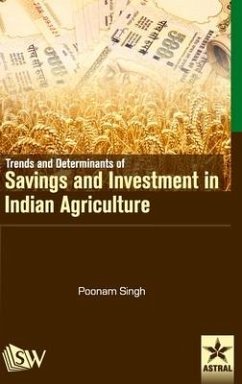The regional picture of investment in agriculture in the state of Uttar Pradesh, the study looks to make a contribution to the policy for development of the backward regions. The study will throw light on the trends of investment in Indian agriculture at macro level and the determinants of agricultural investment and saving at the micro levels. The study is thus expected to make a significant contribution for both improving theoretical understanding and policy formulation in an important area of the economy at the national and the state level. The study is based on field survey of 256 cultivating households drawn from eight villages of Eastern and Western Uttar Pradesh. Income, consumption, saving behavior and investment pattern of sample households were discuss in the different chapters of the book. The study analysed the major determinants of rural saving using cross section village level multiple regression analysis. A few variables were selected as independent variables and grouped into two categories-(a) economic variables (b) non economic variables. The study concluded that Public investment in agriculture in real terms in India shows an absolute decline in the eighties, which continued into the nineties. Availability of institutional finance, Sizes of the farm-holding, Technological development in terms of mechanization, non-farm income of the sample households, commercialization of agriculture and educational level of heads had positive and significant impact on the saving of households.








